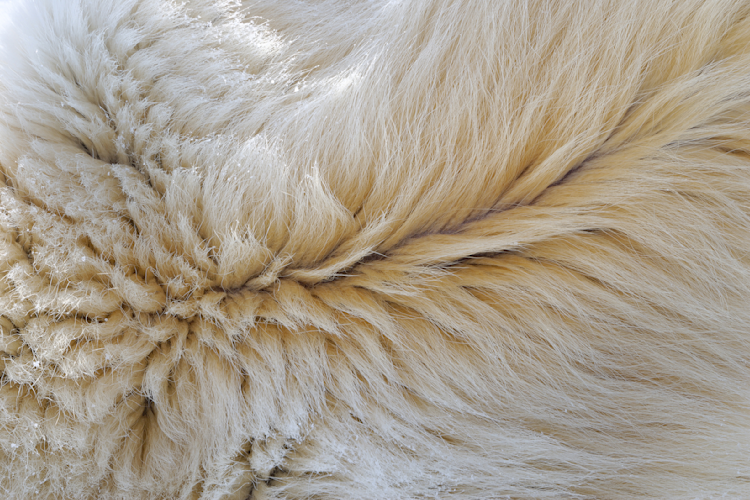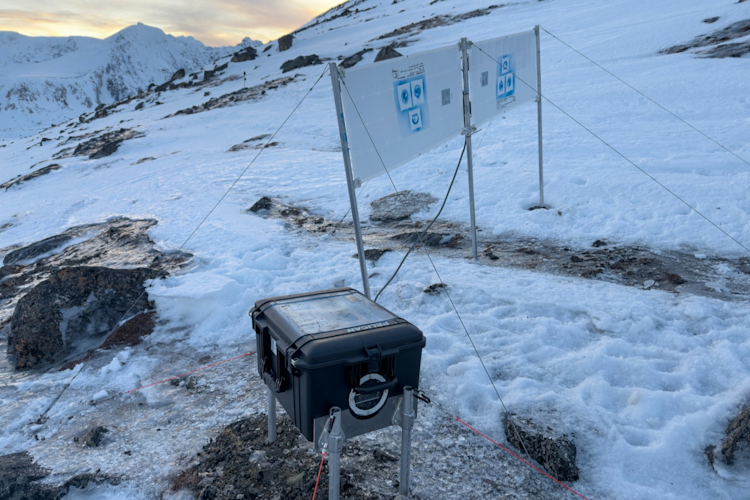Is she or isn't she?
Figuring out if a polar bear is pregnant might seem straightforward: just look for hormonal or physical changes, right? In reality, polar bear scientists have learned that it’s way more complicated than it seems. Polar bears have evolved extraordinary adaptations to survive in extreme Arctic environments, and their reproductive strategies are just as unique. Despite more than 40 years of research, there's still no reliable, non-invasive pregnancy test for this iconic species. Here’s why.
Complexities of bear reproduction
Polar bears, like other members of the bear family, have unique reproductive processes that make it difficult to detect pregnancy. First, females experience embryonic diapause, a process in which a fertilized egg grows to the blastocyst stage (about the size of a grain of sand) and then suspends its development for several months. This pause in pregnancy is an evolutionary adaptation that allows bears to synchronize the birth and rearing of their cubs with optimal environmental conditions, enhancing cub survival. During diapause, the embryo is free-floating and unattached to the uterine wall, so it doesn’t trigger any detectable changes in the female.
A second major challenge is that bears can experience pseudopregnancy, also called false pregnancy. During pseudopregnancy, a female’s body mimics pregnancy, complete with elevated progesterone levels and denning behaviors, even though no embryos are present. This hormonal mimicry makes it almost impossible to distinguish a true pregnancy from pseudopregnancy using typical pregnancy indicators.
Why can’t they just pee on a stick?
Even if we sent our bravest intern to collect a urine sample from a pregnant polar bear, an over-the-counter pregnancy test kit wouldn’t reveal those two pink lines. Human pregnancy tests detect a tiny protein (human chorionic gonadotropin, hCG) that’s produced by the embryo, enters maternal circulation, and shows up in urine. However, hCG is produced only by great apes, so while human pregnancy tests work on gorillas, chimpanzees, and orangutans, they fail to work on polar bears. Could there be a pregnancy marker unique to bears? Possibly, but scientists haven’t found it yet.
What about other hormones?
In many wildlife species, pregnancy can be confirmed by measuring changes in progesterone in blood, urine, feces, and even fur. Scientists have tested this approach in polar bears and found that progesterone does increase during pregnancy, but frustratingly, it also increases in pseudopregnant females. Progesterone levels during pseudopregnancy are indistinguishable from those of pregnant females. Scientists have also explored other hormone markers in feces and urine samples, but so far, none can reliably distinguish pregnancy from pseudopregnancy.
Ultrasound examinations
In theory, ultrasonography could help us diagnose pregnancy and some zoos have even trained their bears to participate in voluntary ultrasound exams. However, there are several challenges that make this approach impractical. During the period of embryonic diapause, the blastocyst is too small to be seen on ultrasound. Then, as females prepare for potential pregnancy, they put on significant fat stores, which create a logistical hurdle: an ultrasound probe needs to be within about 12 inches (30 cm) of the target tissue to get a clear image, but with all that extra fat, finding the uterus via ultrasound becomes difficult. Even once the fetus begins developing, they remain quite small relative to the mother, making them hard to spot until very late in pregnancy. By that time, pregnant females are usually denning, and scientists try to avoid disturbing them during this sensitive period. All of these factors mean that ultrasound, while promising, isn’t a practical tool for detecting polar bear pregnancies.
Can’t they train a sniffer dog to detect pregnancy?
Medical detection dogs have been trained for a variety of tasks, including cancer detection. Using hundreds of fecal samples collected from confirmed pregnant or pseudopregnant polar bears, scientists worked with a professional dog trainer to try to teach a beagle to identify samples originating from pregnant females. The dog learned to discriminate the pregnant samples from samples collected during pseudopregnancies, and from those collected from the pregnant females prior to them becoming pregnant! While initial results were promising, it became apparent that the dog memorized the unique scent signatures of specific pregnancies and could not generalize to new pregnancies. Doggonit!
Progress through persistence
Although no method has worked perfectly yet, each discovery brings us closer to understanding the mysteries of polar bear reproduction. New biological discoveries and technological breakthroughs, from biosensors to advanced imaging, provide hope for a solution. A reliable pregnancy detection method would help scientists understand reproductive challenges, pinpoint critical phases in a bear’s reproductive cycle, and ultimately could offer insights into the reasons behind reproductive failures. As climate change continues to impact polar bear habitat, every new detail learned about polar bear biology strengthens efforts to conserve this iconic species.
Dr. Erin Curry is the director of the Polar Bear Signature Project at the Cincinnati Zoo and Botanical Garden’s Center for Conservation and Research of Endangered Wildlife (CREW). Her research aims to advance our understanding of polar bear physiology, from the molecular to the population level. By using zoo bears as models, her lab is developing and validating tools and techniques for studying wild populations to support species conservation.


















